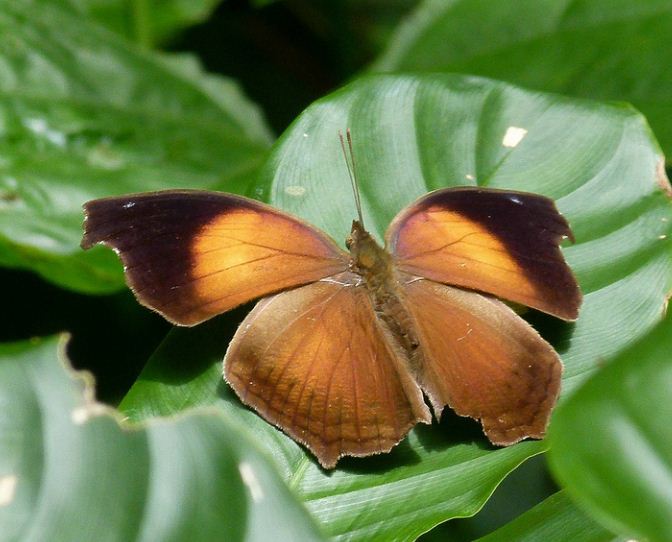
SALAMIS CACTA(Salamis cacta)
Phylum —arthropoda
Class —insecta
Order — lepidoptera
Family —nymphalidae
Genus –salamis
Appearance
The younger caterpillars are black with spines and two long horns on the head. The older caterpillars are grey with brown hair.
The wingspan of this butterfly is 80-100 mm. The wings are light brown with a purple tint, their edges are darker. The ups of the wings are black with a small white dot, curved like a hook. Hind wings are with small tails. Underpart is with an indistinct orange-brown pattern. A butterfly with folded wings resembles a dry leaf.
Habitat
It is found in Senegal, Guinea, Sierra Leone, Liberia, Ivory Coast, Ghana, Togo, Benin, Nigeria, Cameroon, Equatorial Guinea, Gabon, the Republic of Congo, the Central African Republic, Angola, the Democratic Republic of Congo, Uganda, Rwanda, Ethiopia, Kenya, Tanzania, Malawi, Mozambique and Zimbabwe.
Behavior
It demonstrates daily activity. Adults usually fly in the forest canopy, but may descend to suck at damp patches or to settle in the undergrowth. Occasionally, individuals may join migrations of other species. Adults are on wing year round.
Diet
The larvae feed on Urera hypselodendron, Urera trinervis, and Urera occidentalis.
Butterflies feed on nectar.
Reproduction
For their reproduction you need a terrarium with a size of 50 x 50 x 70 cm. The females lay their eggs on the young shoots of the forage plant.The eggs are salmon-pink and round. The incubation period is 6 days.It is better to keep the caterpillars in terrariums for 6-8 insects placing a pot with a forage plant in it. The temperature is 22-25 oC at the humidity of60-70%. The pupa is pale ochreous.
In captivity
The mesh terrarium with a size of 50 × 50 × 70 mm is suitable for keeping butterflies. Room temperature is necessary. Daylight time is 12 hours. You can feed the butterflies with honey syrup diluted with boiled water in a ratio of 1: 10.
 Russian
Russian
 English
English























